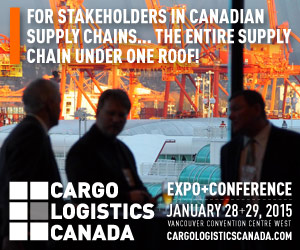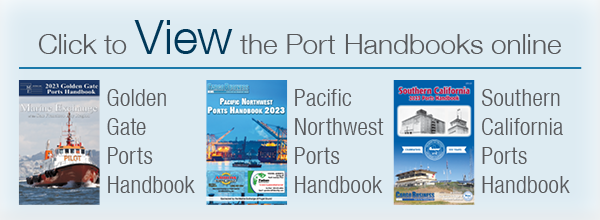|
By William DiBenedetto, CBN Features Editor
Congestion-Pressure-Pain. The old T.V. ad touted a pill designed to relieve those symptoms, but unfortunately as the port and shipping industry steams into the New Year, there’s no ready remedy available to mitigate those disruptive factors.
As 2015 began, U.S. West Coast ports battled to maintain productivity in the face of unprecedented congestion woes caused in large part by stalled contract negotiations between the International Longshore and Warehouse Union (ILWU) and the Pacific Maritime Association (PMA). This process has gone on since last May and it’s unclear at this point how it will shake out, but at least federal mediation is now in the mix.
Port of Long Beach Chief Executive Jon Slangerup said: "We urgently need a resolution to their long contract negotiations so they can join all of our industry stakeholders in restoring and improving productivity at all West Coast ports."
But the contract situation is not the only problem: eventually it will be resolved. Other factors have contributed, including the deployment of huge containerships by the ocean carriers, leading to increased times at berth per vessel handled at the terminals while putting pressure on equipment and storage space. And the huge ships keep getting larger: Japan’s MOL is in the market to buy 20,000-TEU new-builds through a third party charter deal, according to news reports. If that occurs the vessels would be the largest in the world, overtaking the 19,224-TEU MSC Oscar. The largest containership currently in service is the 19,000-TEU CSCL Globe.
In addition, the formation of alliances such as the 2M, G6 and the CKYHE has meant more lines loading on the same vessel, complicating yard operations and leading to more moves within and between terminals, especially when it comes to loading and discharging trains, along with increased truck congestion and driver shortages.
Congestion at U.S. West Coast ports is expected to continue "well into 2015," according to Drewry Shipping Consultants. Drewry says U.S. shippers should prepare for further disruption and ship arrival delays.
|

Carriers operating on trans-Pacific routes are speeding up ships on the return leg to Asia, but schedules are not likely to get back to normal any time soon, Drewry said. "Entering the slack season, lower volumes will at least give some respite, but fundamental issues need to be addressed by the industry's stakeholder if this is not to be a recurring theme," said Drewry in a recent Container Insight.
Productivity issues prompted the Port of Tacoma’s container volumes to decline 8 percent over the same month last year, marking the end of eight straight months of growth. While Tacoma’s containerized imports grew 12.8 percent through November to 713,047 TEUs, most of those gains occurred earlier in the year.
Trans-Pacific vessels were arriving an average of 2.4 days later than scheduled in November, more than twice the normal deviation, Drewry reported. Only 46 percent of ships arrived on time in Los Angeles-Long Beach in November, down from 90 percent in July.
As 2014 wound down, traffic volumes at the ports of Los Angeles and Long Beach reflected the volatile nature of the operational slowdowns. In November, LA handled 663,346 TEUs—a 3 percent decline compared to November 2013—but loaded containers dropped more than 7 percent. At Long Beach, loaded boxes declined approximately 15 percent in November.
Recently, containers took an average of more than two weeks to move through Los Angeles and Long Beach terminals, a process that should take no longer than three days.
It is the worst congestion faced by the two ports in more than a decade and could continue for some time.
Next: Congestion woes on the West Coast an opportunity for the East Coast?
|




